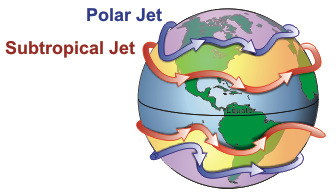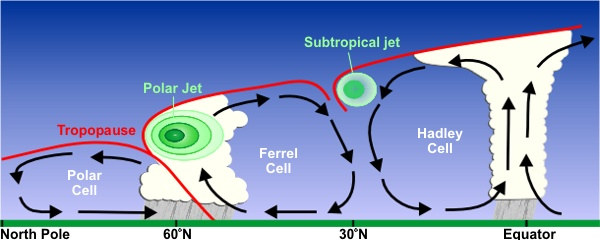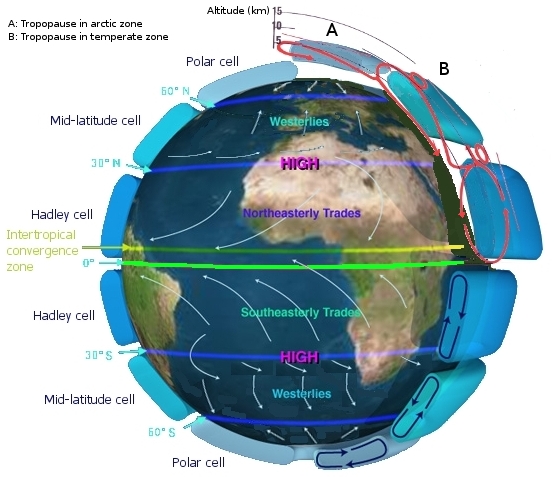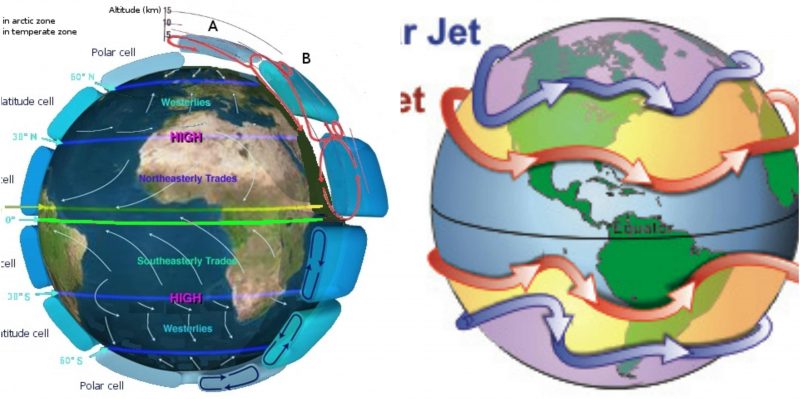In 1883, the Krakatoa volcano erupted, and weather watchers tracked and mapped the effects the eruption on the sky over several years.
The phenomenon, called “equatorial smoke stream”, helped visualize the prevailing air currents of the Earth, including the jet streams. Various people over the years have noticed and tracked jet streams, but most of their observations go unnoticed outside of their own countries.

Jet streams are the Earth’s narrow, fast-flowing, and meandering air currents. The strongest are the polar jets approximately 7-12 kilometers above sea level.
The subtropical jet streams are weaker and higher in the atmosphere at 10-16 kilometers above sea level. Jet streams wander laterally in quite dramatic waves and can exhibit huge changes in altitude. Breaks in the tropopause at the Polar, Hadley and Ferrel circulation cells cause the streams to form. The combination of circulation and Coriolis forces acting on the cell masses drive the phenomenon. The Polar jet, being at a lower altitude, strongly affects weather and aviation. It is most often found between the latitudes of 30 degrees and 60 degrees, while you can find the subtropical jets at 60 degrees. A jet stream is generally a few hundred kilometers wide and only about 5 kilometers high.


The jet stream flowing from East to West brings many changes to the weather, and it is only now being understood how jet streams affects cyclonic storm systems at low levels in the atmosphere. A good example of this is what took place in 2007 and 2012 as Britain suffered severe flooding due to the polar jet staying south for their summer.
There are many theories as to why these narrow jet streams exist – why don’t air currents cover the entire planet at the same time? The most substantiated theory is that jet streams are caused by differences in the cool and warm air; the cooler air from the polar region undercuts the sub-tropical air.
Jet streams are very important for aviation, and they have been commercially used to reduce flight time and fuel consumption. In 1952, Pan Am Airlines used one to cut the flight time down from 18 hours to 11.5 on its trip from Tokyo to Honolulu. However, using jet streams this way is not entirely safe due to the clear-air turbulence that is created by both vertical and horizontal wind shear.
Scientists would like to further harness the power of the jet stream; it is estimated that a mere 1% of the wind’s power could meet the world’s energy needs. However, technology is up to 20 years away from developing something that could make use of the jet streams.

Climate change has an effect on where the jet streams wander. El Niño is an effect of the upper-level jet stream activity; it has and will continue to change the rainfall and temperature levels across North America. The changes also affect tropical cyclones as they develop in the eastern and Pacific basins.
La Niña also affects the weather across North America, with more winter storms and snow and hot, dry summer conditions. Climate change prediction scientists believe that over the long term the jet stream will gradually weaken. It has been found that both the northern and southern jet streams are slowly drifting their way towards the poles.
